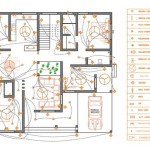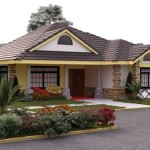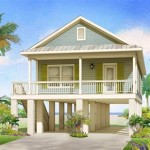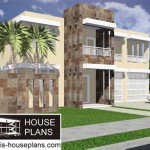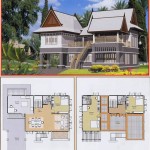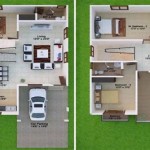Florida Vernacular House Plans: Essential Aspects for a Timeless and Sustainable Home
Florida's rich architectural heritage has given rise to the distinctive Florida Vernacular style, known for its adaptability to the region's subtropical climate and casual outdoor living. When designing Florida Vernacular house plans, architects consider key elements that ensure comfort, functionality, and an enduring aesthetic.
1. Elevated Construction: Flooding Mitigation and Cross Ventilation
Florida's flat topography and vulnerability to flooding necessitate elevated construction. Houses are typically raised on stilts or pilings, creating a crawl space or ground floor that allows for air circulation and moisture control. This design also promotes cross ventilation, cooling the home naturally.
2. Wide Overhanging Roofs: Sun Protection and Rainwater Drainage
Generous overhanging roofs protect the walls and windows from excessive sunlight and driving rain. The ample roof overhangs create shaded porches and patios, extending the living space outdoors. Gutters and downspouts efficiently channel rainwater away from the foundation, preventing moisture damage.
3. Open Floor Plans: Indoor-Outdoor Connectivity
Florida Vernacular homes often feature open floor plans that seamlessly connect indoor and outdoor areas. Large windows and glass doors blur the boundaries between the interior and exterior, creating a spacious and light-filled living environment. Screened porches and lanais extend the living space, providing shaded relaxation areas.
4. Cross Ventilation: Natural Cooling and Air Flow
To combat Florida's hot and humid climate, Florida Vernacular homes maximize cross ventilation through various openings. Windows and doors are strategically placed to capture prevailing breezes, creating a natural cooling effect. High ceilings and open spaces allow for the easy circulation of air.
5. Sustainability Features: Energy Efficiency and Water Conservation
Modern Florida Vernacular house plans incorporate sustainable features to reduce energy consumption and water use. Energy-efficient appliances, LED lighting, and high-performance windows contribute to lower utility bills. Rainwater harvesting systems collect and store rainwater for landscaping purposes, conserving water
6. Bahama Shutters: Storm Protection and Natural Ventilation
Traditional Bahama shutters are a hallmark of Florida Vernacular architecture. These louvered shutters provide protection from hurricanes while allowing for ventilation and natural light. When closed, they create a protective barrier, while when open, they direct airflow into the home.
7. Materials: Coastal Durability and Sustainability
Florida Vernacular homes utilize materials that withstand the harsh coastal climate. Cedar siding, cypress trim, and tabby (a mixture of oyster shells and lime) provide durability, moisture resistance, and insulation. Natural materials like brick and stone accentuate the home's character and lend a timeless appeal.
Conclusion:
Florida Vernacular house plans draw upon the region's cultural heritage and subtropical climate to create homes that are both comfortable and aesthetically pleasing. By incorporating these essential aspects, architects design homes that maximize natural ventilation, protect against the elements, seamlessly connect indoor and outdoor areas, and promote sustainability. The result is a timeless and resilient living environment that embodies the unique spirit of Florida's architectural landscape.
Florida Vernacular Architecture Groveland Fl Official Website

How A Modern Take On Florida Vernacular Architecture Helps Non Profit Serve Its Vision

The Florida Er A Rural House Type Houseplans Blog Com

American Vernacular Architecture The Shotgun Style In Florida Historical Society

House Side Elevation View For F 576 Florida Vernacular Architectural Style Row Plan With Pastel Colors Bahama Plans Duplex Design

Main Floor Plan 2 For F 576 Florida Vernacular Architectural Style Row House With Pastel Colors Bahama Small Design

American Vernacular Architecture The Shotgun Style In Florida Historical Society

Brillhart House References Florida S Vernacular Architecture

Florida Er Architecture Wikipedia

Florida Vernacular Traditional Veranda Orlando By Armistead Design Drafting Houzz Ie

